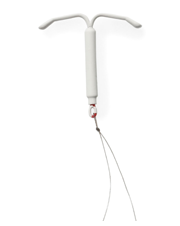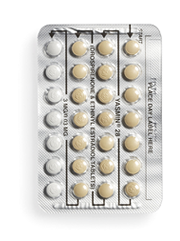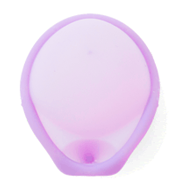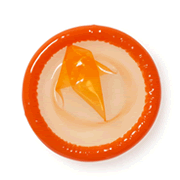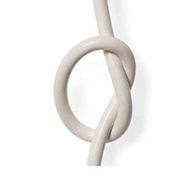Demystifying Trich, the Super Common STI You’ve Never Heard Of

Everything you need to know about this curable STI
You’ve heard of chlamydia. You’ve heard of gonorrhea. But have you heard of trich (pronounced like “trick”)? Trich—which is short for trichomoniasis—is the most common non-viral STI. According to Dr. Ina Park, Associate Professor of the Department of Family and Community Medicine at the University of California San Francisco School of Medicine and medical advisor to the American Sexual Health Association, it’s more common than chlamydia and gonorrhea combined. It’s also the most common curable STI. That’s right—curable.
“Trichomoniasis has been perceived as the least common STI,” Dr. Park says. “In fact, according to a survey by the American Sexual Health Association, only one in five women are familiar with it! While some have never heard of it, it is the most common non-viral STI—herpes and HPV being the most common overall.” For up to date information on all the STIs out there, talk to a provider at your nearest The Right Time health center.
So what is trich? And how does it spread?
Trich is an STI caused by a tiny (like, super tiny—you can’t see it with the naked eye) parasite called Trichomonas vaginalis. It’s spread when semen, pre-cum or vaginal fluids from someone carrying the parasite get on the penis, vulva or vagina of a person who isn’t carrying it. It’s commonly spread via vaginal intercourse and can also be spread when infected fluids get on someone’s hand or on a sex toy that then comes in contact with someone’s body. Trich also loves vulva-to-vulva contact, so if you’re having that kind of sex, it’s definitely one to be aware of.
Do you need to get tested?
Okay, so that’s how it’s spread. But what does it look like when you have it? According to the CDC, only about 30% of people who have trich will have symptoms. But if someone does have symptoms, they may include a lot of the usual players: itching around the genitals, pain during sex, unusual discharge, genital swelling and/or blood in vaginal discharge. If you do have symptoms, make sure to go get tested because like every other STI, the only way to know for sure whether you have trich is to get tested.
But here’s a not-so-fun fact: even though trich is the most common curable STI, Dr. Park says there aren’t any national guidelines that recommend testing for it, even if you’re doing tests for other STIs. So if you want to get tested at your next annual appointment (which is a good idea if you’re under 24 or have had a new sexual partner since your last visit), you’ll need to talk to your provider about it.
“For a while, we didn’t know whether trichomoniasis was actually a harmful infection,” Dr. Park says. “Today we understand that trichomoniasis may increase the risk of catching HIV and also cause preterm birth and other negative consequences in pregnancy.”
Dr. Park also says that while some clinicians test for STIs as a routine part of the annual exam, others wait for their patients to request it. Considering the fact that STIs are currently on the rise nationwide, there’s no time like the present for making testing part of your regular healthcare routine.
“That’s why it’s important for people to feel comfortable sharing their sexual history and experience with their health care provider and asking them whether they should be tested,” Dr. Park says. “People who are uncomfortable sharing their experience and history with their provider should find a new one—the relationship is so important.”
But obviously it’s not super easy to find a new health care provider. For anyone who doesn’t know where to go to find a provider, click here to find your nearest The Right Time health center. They also have a bunch of info about STI testing in general to help anyone who’s feeling weird about it get more comfortable.
What to do if you find out you have trich.
If you do get diagnosed with trich, don’t freak out. It’s really common for people who receive an STI diagnosis to think that they’re dirty or immoral or disgusting.
But instead of thinking of an STI diagnosis as some kind of moral issue or judgement on your character, I challenge you to think about this way: human beings give each other germs. Sometimes we give each other germs with our mouths; sometimes we give each other germs with our genitals. If you’ve been diagnosed with trich, you’ve had the not-so-great luck of running into that Trichomonas vaginalis germ. When you had the not-so-great luck of running into the Streptococcus pyogenes germ—which causes strep throat—did you think you were a dirty and disgusting person? Of course not! And there’s no reason to think so if you have trich, either.
Finally, on a practical note, if you get diagnosed with trich, make sure any sexual partners are tested and treated as well. This is one of those STIs that you actually can “pass back and forth,” so don’t risk becoming one of the one in five people who get reinfected with trich within three months of treatment.
Updated September 2019
Related Content

Article
Birth Control & Your Period: What to ExpectBirth control often changes your period, and that’s normal and safe.

Article
Handling the “When Are You Having Kids?” Question Around the HolidaysRemember: your timeline is yours.

Article
What Should I Do After I Get Diagnosed with an STI?Getting an STI doesn’t change who you are.

Article
How Can I Take Care of My Breast Health?Keeping up with routine preventative health visits can help catch any changes early.



